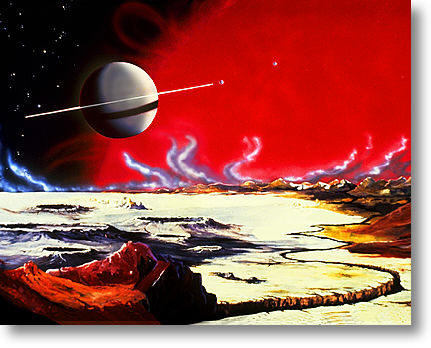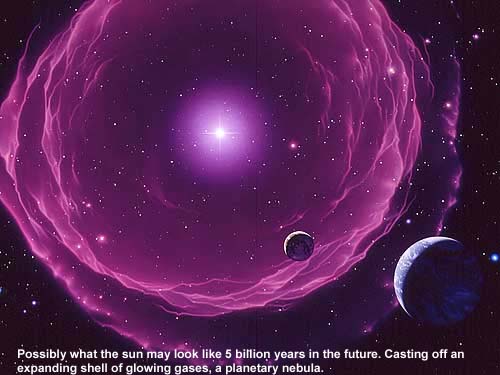
Red Giants
All through the long history of hydrogen to helium fusion in a star, the relentless compression of gravity is balanced by the outward pressure from the nuclear fusion reactions in the core. Eventually the hydrogen in the core is all converted to helium and the nuclear reactions stop. Gravity takes over and the core shrinks. The layers outside the core collapse too, the ones closer to the center collapse quicker than the ones near the surface. As the layers collapse, the gas compresses and heats up.
Eventually, the layer just outside the core called the ``shell layer'' gets hot and dense enough for fusion to start. The fusion in the layer just outside the core is called shell burning. This fusion is very rapid because the shell layer is still compressing and increasing in temperature. The luminosity of the star increases from its original value. The gas envelope surrounding the core puffs outward under the action of the extra outward pressure. As the star begins to expand it becomes a subgiant and then a red giant.
 |
At the bloated out surface, the increased amount of energy is spread out over a larger area so each square inch will be cooler. The surface will have a red color because it is so cool and will be much further from the center than during the earlier phase of star eveolution. Despite its cooler surface temperature, the red giant is very luminous because of its huge surface area. When the Sun becomes a red giant, Mercury and Venus will be swallowed up by the Sun and perhaps the Earth will too. Even if the Earth is not swallowed up, conditions on its surface will become impossible for life to exist. The Sun's increased luminosity will heat the Earth's surface so much that the water oceans and atmosphere will evaporate away. |
 |
 |
| Saturn & Red Giant Sun Seen from Titan Billions of years from now, our sun will have used up most of its supply of hydrogen. It will begin to shrink which will makes its interior hotter. At this high heat, new reactions with heavier elements will occur, creating a new burst of energy. This will cause the sun to expand to a red giant star, seen here in Astro Images' space art rendering from Saturn's moon, Titan.
|